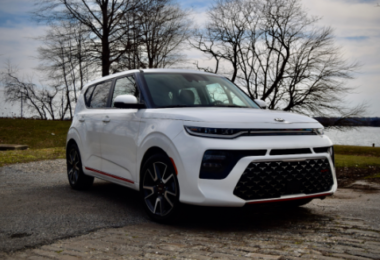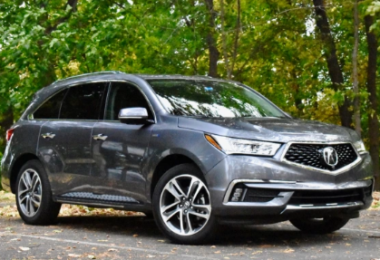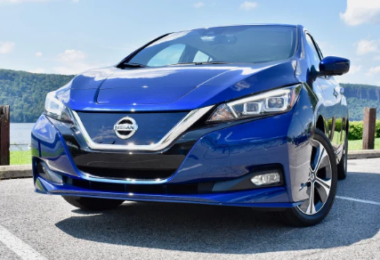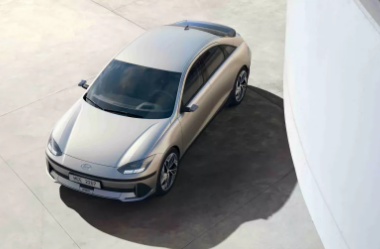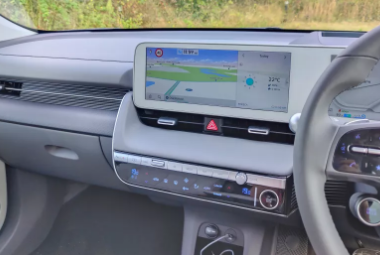Three-row SUVs have taken over as the vehicle of choice for those who need to move a lot but can’t stand a minivan. By opting for a midsize SUV over a minivan, you’ll have to make a number of sacrifices, but the 2021 Toyota Highlander Hybrid shows that fuel efficiency doesn’t have to be one of them.
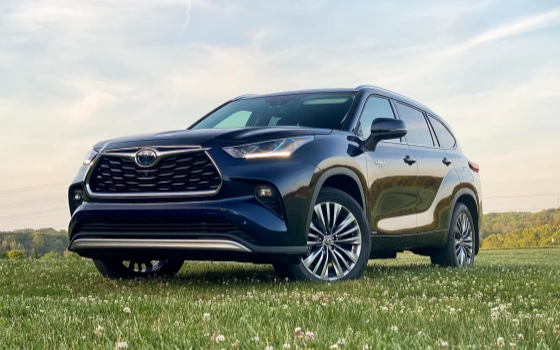
The electrified Highlander Hybrid swims in a much smaller pond while the Highlander struggles to compete in the vast lake that is the midsize SUV sector. The hybrid Kia Sorento and Ford Explorer are its only serious rivals. It doesn’t, however, solely succeed due to a lack of rivalry: The Highlander Hybrid’s key selling point is that it provides fuel economy comparable to that of a compact car in a vehicle that can seat up to eight people and is more appealing than a minivan.
The starting price of the 2021 Toyota Highlander is $39,950 including the required $1,215 destination cost. You may purchase the LE trim with front-wheel drive for that sum. The top-of-the-line Platinum model with all-wheel drive served as our test vehicle. The starting price for the Platinum is $49,905, while the as-tested price for all-wheel drive is $51,855.
Interior and exterior
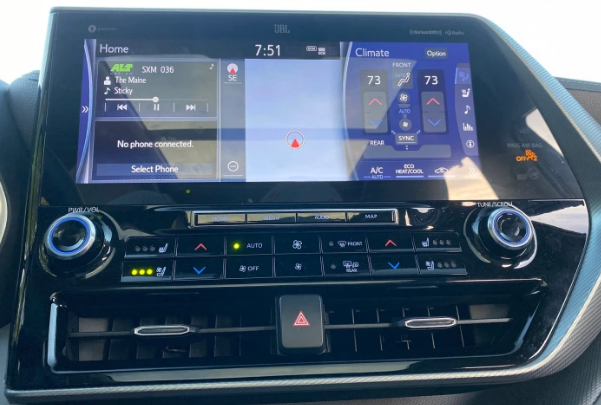
In addition to sharing the same platform, the RAV4, Venza, and Highlander from Toyota also have a unified visual aesthetic that makes it obvious they are all related. The Highlander Hybrid is the most stern of the trio despite being the largest SUV. It opts for an exterior with flowing lines rather than the blocky appearance of many other midsize SUVs. Even Toyota’s most divisive design feature, the front grille, is muted and well-coordinated on the Highlander Hybrid.
Boxy designs have the advantage of maximizing internal space. Interior styling of the Highlander Hybrid doesn’t. Only 27.7 inches of legroom are available in the third row, making it difficult for anyone to sit there comfortably, even small children. In the medium class, it ranks among the lowest numbers. Similar results apply to the Highlander Hybrid’s load capacity, which is 16 cubic feet behind the third row and a total of 84.3 cubic feet behind the first row. Though Toyota at least surpasses the Hyundai Sorento Hybrid’s abysmal 75.5 cubic feet of total luggage space, non-hybrid choices like the Volkswagen Atlas and Chevrolet Traverse provide greater space.
Despite the unusual combination of sharp edges and asymmetrical interior design, Toyota managed to include a few functional storage places. With a few noticeable exceptions, our test vehicle’s material quality seemed acceptable overall for a $51,000 SUV. the imitation wood found throughout the interior and the dash’s chrome trim. The silver trim on the dash looks scraggly to the touch and feels like a bargain-basement value option in addition to clashing with the other elements.
The important aspects, including vision and seat comfort, are very impressive. The available second-row captain’s chairs aren’t that uncomfortable compared to the front bucket seats, which offer all-day comfort. The Highlander Hybrid’s powerplant is a hybrid, therefore it generally keeps it quiet. Additionally, Toyota adds acoustic noise-reducing windows to the Platinum model, which contributes to the SUV’s quiet interior. A digital rearview mirror, heated and ventilated front seats, leather upholstery, a panoramic moonroof, and heated second-row captain’s chairs were all standard on our Highlander Hybrid Platinum test car.
Driver assistance, tech, and infotainment
The Highlander Hybrid uses the same infotainment system as many other Toyota vehicles. The standard device has an 8-inch touchscreen with six audio speakers, Apple CarPlay, Android Auto, Amazon Alexa, five USB ports, and a built-in Wi-Fi hotspot. A larger 12.3-inch touchscreen, navigation, an 11-speaker JBL audio system, a wireless charger, and a head-up display were included in our test car.
A useful feature that makes the most of the 12.3-inch screen’s space is the ability to split three functions across the screen.
Automakers are leaning toward touchscreens with a portrait orientation and buttonless infotainment systems, notwithstanding how annoying they may be. Although both might be popular in 2021, it’s encouraging to see Toyota eschew both of these trends. Except for the radio’s tuning feature, most of the controls are easily accessible to the driver. A useful feature that makes the most of the 12.3-inch screen’s space is the ability to split three operations across the screen. The primary problem with Toyota’s infotainment system is that it has archaic visuals that look like they were created for the Motorola Razr when it first came out. Additionally, the menus’ design is confusing.
The Toyota Safety Sense 2.5+ package of cutting-edge safety features is standard on every Highlander Hybrid. Forward Collision Warning, Pedestrian Detection, Adaptive Cruise Control, Toyota’s Lane Tracing Assist, Automatic High Beams, Lane-Keeping Assist, and Traffic Sign Recognition are just a few of the features offered by the suite.
When reverse is activated, our tester provides a 360-degree bird’s eye view that, despite its low resolution, is useful. When using all three seats, a digital rearview mirror is also tremendously helpful. At night, the image’s quality significantly deteriorates, however turning a switch makes it become a conventional mirror again.
Driving knowledge
A 2.5-liter four-cylinder engine from Toyota and two electric motors combine under the hood to produce 243 horsepower. If that sounds familiar, it’s because the RAV4 Hybrid uses the same powertrain. The power is sent to the front wheels as standard through a continuously variable automatic transmission (CVT), or all four wheels on more expensive models like our test vehicle.
The gasoline model’s 3.5-liter V6 engine, which has a 295 horsepower rating and is in the middle of its competitors, and the hybrid powertrain are not too dissimilar. The Explorer Hybrid has a 3.3-liter V6 and an electric motor for 318 horsepower, while the Sorento Hybrid has a smaller four-cylinder engine and one electric motor for up to 227 horsepower. The Sorento Hybrid is rated at 2,000 pounds, and the Explorer Hybrid can tow 5,000 pounds, placing the Highlander Hybrid in the middle with a towing capacity of up to 3,500 pounds.
It should come as no surprise that the Highlander Hybrid isn’t athletic since neither hybrids nor midsize SUVs are known for being so. The electrified hybrid offers more than enough power for city driving and commuting, but passing on the freeway may seem underpowered. The four-cylinder engine shrieks to life with a horrible thrum when pressing hard on the throttle to finish a pass. The Highlander Hybrid is far from an exciting SUV, so most drivers will want more performance from it, but it will certainly do the job. Toyota is an expert hybrid manufacturer, as seen by the Highlander Hybrid. The interplay of the gas engine and electric motors is seamless and promotes driving practices that conserve fuel. Normally, CVTs are the weak link in any powertrain, but because of the Highlander Hybrid’s slightly slower acceleration, the transmission performs admirably.
A hallmark isn’t agility either. Without a care in the world, the midsize SUV drifts through turns. Without much joy, it sways in both directions. The Highlander Hybrid boasts a comfortable ride, and the SUV is simple to control on narrow roadways. These qualities, in our opinion, are significantly more crucial for a midsize SUV than cornering capability.
Fuel efficiency and safety
With the Highlander Hybrid, fuel economy is the name of the game. Although its performance may not be exciting, the manner it consumes fuel is remarkable, especially for a car of its size. The Highlander Hybrid is capable of 36 combined mpg with front-wheel drive (36 mpg city, 35 mpg highway). An incrementally lower rating of 35 mpg combined is obtained with all-wheel drive (35 mpg city, 35 mpg highway).
These figures place the Highlander Hybrid among the most economical SUVs available today. Only one other midsize SUV, the Sorento Hybrid, has better fuel economy ratings than the Highlander Hybrid. SUV from Kia is expected to achieve up to 37 mpg combined (39 mpg city, 35 mpg highway). The Ford Explorer Hybrid can only manage a combined fuel economy of 27 mpg (27 mpg city, 28 mpg highway).
The 2021 Highlander Hybrid earned a “Top Safety Pick+” rating from the Insurance Institute for Highway Safety (IIHS) during testing. It’s vital to note that the Good-rated LED projector headlights are only available on the Platinum trim. The Highlander Hybrid was rated as having a five-star overall safety rating by the National Highway Traffic Safety Administration (NHTSA). The frontal crash and rollover tests gave the SUV a four-star rating.
Toyota provides a three-year, 36,000-mile standard warranty and a five-year, 60,000-mile powertrain warranty for the Highlander Hybrid. Although the Sorento Hybrid has a segment-leading five-year, 60,000-mile basic warranty and a 10-year, 100,000-mile powertrain warranty, these are typical for mainstream brands.
The Highlander Hybrid shares similar warranties with many of Toyota’s other hybrid vehicles, including a 10-year, 150,000-mile battery guarantee and an eight-year, 100,000-mile warranty for hybrid system components. Even though some people may be put off by the thought of a hybrid due to reliability concerns, Toyota has a long history of producing reliable hybrids dating back to 1997.
How DT would set up this vehicle
The hybrid Highlander is a $1,450 improvement from the standard gas-powered Highlander, and it is definitely worth it. However, you can still get the majority of the same amenities for less money with the Limited. Unfortunately, Toyota reserves its best tech features for the range-topping Platinum trim. With 20-inch wheels, heated and ventilated front seats, a wireless phone charger, and a sunroof, that model is well-equipped. While the Limited includes an 8-inch touchscreen as standard, customers can upgrade for an additional $1,050 to a 12.3-inch touchscreen with a 360-degree camera. The final cost of the ideal Highlander Hybrid is now $4 7,755.
Additionally, if you reside in a region where severe weather is frequent, you want to consider adding all-wheel drive. It costs $1,525 more. Even though you won’t notice it when driving every day, it’s worth it for times when there is light snow on the ground and for added peace of mind.
Our view
When we tested the standard Highlander in 2020, we didn’t like it. The SUV falls significantly short of leaders in the market due to its confined third row, average interior volume, and shoddy design. While the Highlander has largely stagnated, others have continued to make significant advancements in important fields. Simply put, that falls short in the midrange class. However, the Highlander Hybrid is a another matter. It is one of just three midsize SUVs with up to eight seats that also consumes fuel like a compact car.
The Highlander Hybrid’s main rival is the Kia Sorento Hybrid. It gets 1 more combined mpg, comes with a longer warranty, and has greater third-row legroom than the Highlander Hybrid. Additionally, it is available with a classier look and wireless smartphone compatibility. The Sorento Hybrid sports a 227-horsepower motor, a limited cargo compartment that can hold up to 75.5 cubic feet of cargo, and just an 8-inch touchscreen as possible touchscreens.
The Ford Explorer Hybrid is another option. With 318 horsepower, it has the most power in its class and is the most fun to drive. With the Explorer Hybrid, you’ll also get an incredible 87.8 cubic feet of overall cargo space and 32.2 inches of third-row legroom. The largest figures in the hybrid class are both of them. Ford only provides its outdated SYNC 3 infotainment system and an 8-inch touchscreen for the Explorer Hybrid. The SUV also has the worst fuel efficiency in the group.
Do you need one?
Yes. The economical powertrain of the Highlander Hybrid adds the flavor that the Highlander was lacking.
You can also check Chrysler Pacifica review and all you need to know about it



